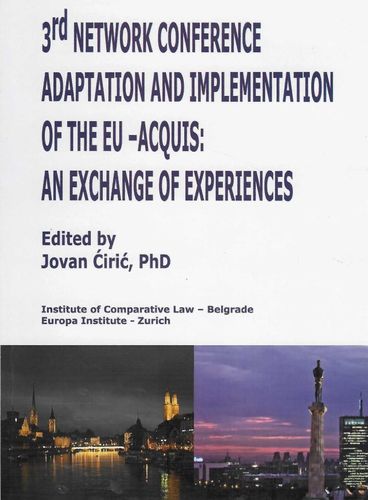Estonia’s Integration in the European Union (EU) - From Accession to the EU to Participation in the Baltic Sea Strategy
Estonia’s Integration in the European Union (EU) - From Accession to the EU to Participation in the Baltic Sea Strategy
Author(s): Christoph Shewe
Subject(s): EU-Accession / EU-DEvelopment, EU-Legislation
Published by: Institut za uporedno pravo
Summary/Abstract: To large extent Estonia’s current political and economic state can be considered as a result of its’ geographic position, demographic structure and especially its history. After centuries of Danish, Swedish, German, and Russian rule, Estonia obtained independence in 1918. After a short German occupation Estonia was forcibly incorporated into the USSR in 1940 until it regained its freedom in 1991, with the collapse of the Soviet Union. Even though the constant occupation by foreign powers has also caused some reluctance to joining international organisations which seemed to limit the newly gained independence, Estonia soon started negotiating international treaties, to promote economic and political integration in Western Europe. In the spring of 2004 it joined NATO and the EU.
Book: 3rd Network Conference Adaptation and Implementation of the EU -Acquis: an Exchange of Experiences
- Page Range: 43-55
- Page Count: 13
- Publication Year: 2009
- Language: English
- Content File-PDF

